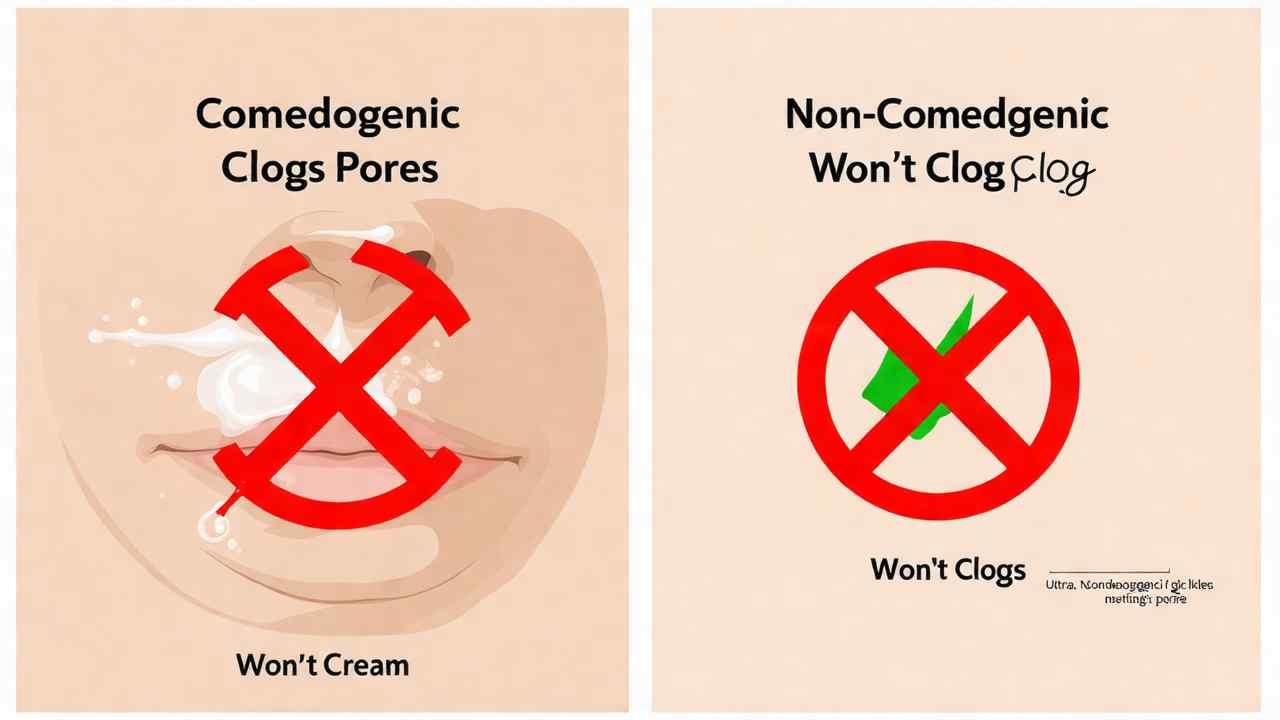
🧪 What Does Non-Comedogenic Mean? A Skincare Guide
🧪 What Does Non-Comedogenic Mean in Skincare? (The Ultimate Guide) 🧪
You are standing in the skincare aisle, trying to choose a moisturizer or a foundation. You see the word "non-comedogenic" on many of the labels. It sounds scientific and important, but what does it actually mean? Understanding this one term can be a game-changer for your skin's health.
So, what does non-comedogenic mean? In the simplest terms, it means the product has been specifically formulated and tested to be unlikely to cause clogged pores. It is your best defense against a major cause of acne. For many people, it is the most important word to look for on a skincare label.
This guide will explain the science behind this term. We will also show you who should be using these products. Let's decode this essential piece of skincare jargon. ✅
🤔 First, What is a "Comedo"?
To understand the term, it helps to break it down. The word "non-comedogenic" comes from the medical term "comedo." A comedo is the scientific name for a clogged hair follicle or pore. It is the very beginning of an acne lesion.
There are two types of comedones:
- An open comedo is a blackhead. The clog is open to the air, which oxidizes and turns it dark.
- A closed comedo is a whitehead. The clog is covered by a thin layer of skin.
So, a non-comedogenic product is one that is designed not to create these clogs. It is as simple as that.
- How Are Products Labeled as Non-Comedogenic?
The label "non-comedogenic" is not just a marketing claim. It is based on a testing process. The product is applied to human subjects (often on their backs, where pores are larger). The area is then evaluated by dermatologists over a period of weeks to see if there is a statistically significant increase in the number of clogged pores.
It is important to know that this is not a 100% guarantee. Skincare is highly individual. However, it is a very strong and reliable indicator that the product is a much safer choice for breakout-prone skin.
⭐ Who Should Be Using Non-Comedogenic Products?
While anyone can benefit from using products that do not clog their pores, for some people, it is absolutely essential. You should make a point to exclusively use non-comedogenic products if you have:
- Oily Skin
- Acne-Prone Skin
- Combination Skin
Using a heavy, comedogenic moisturizer or foundation is one of the most common causes of persistent breakouts and bumpy skin texture. Making the switch to non-comedogenic formulas is a foundational step to achieving clear skin.
- How Do You Find These Products?
Finding them is easy. The word non-comedogenic will usually be printed clearly on the front or back of the packaging. You can also look for other helpful terms like "oil-free." The texture is also a good clue. Products that are a lightweight lotion, a gel, or a fluid are often a better choice for oily skin.
As the autumn weather here in Bursa becomes cooler and drier, even oily skin can become dehydrated. It is the perfect time to find a good, lightweight, non-comedogenic moisturizer. This will keep your skin balanced and clear throughout the season. 🍂